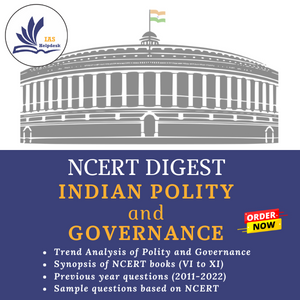Pradhan Mantri Matru Vandana Yojana (PMMVY): Empowering Mothers for Better Health & Nutrition in India
Description
Description: PMMVY provides cash incentives to pregnant and lactating women, aiming to improve health-seeking behavior and reduce undernutrition. Challenges remain, but expanding coverage and simplifying processes can enhance its impact.
Pradhan Mantri Matru Vandana Yojana (PMMVY): Empowering Mothers for Better Health & Nutrition in India
Under-nutrition continues to adversely affect majority of women in India. In India, every third woman is undernourished and every second woman is anemic. An undernourished mother almost inevitably gives birth to a low birth weight baby. Owing to economic and social distress many women continue to work to earn a living for their family right up to the last days of their pregnancy. Furthermore, they resume working soon after childbirth, even though their bodies might not permit it, thus preventing their bodies from fully recovering on one hand, and also impeding their ability to exclusively breastfeed their young infant in the first six months.
Considering these factors Indian government launched Pradhan Mantri Matru Vandana Yojana (PMMVY). It is a Centrally Sponsored Scheme being executed by the Ministry of Women and Child Development.
Objectives of PMMVY
• Providing partial compensation for the wage loss in terms of cash incentives
• improve health seeking behaviour amongst the Pregnant Women and Lactating Mothers (PW&LM).
PMMVY is implemented using the platform of Anganwadi Services scheme of Umbrella ICDS under Ministry of Women and Child Development in respect of States/ UTs implementing scheme through Women and Child Development Department/ Social Welfare Department and through Health system in respect of States/ UTs where scheme is implemented by Health & Family Welfare Department.
Main features of the scheme
• Under PMMVY, a cash incentive of Rs. 5000 is being provided directly in the account of Pregnant Women and Lactating Mothers (PW&LM) for first living child of the family subject to their fulfilling specific conditions relating to maternal and child health.
• The eligible beneficiaries would receive the remaining cash incentives as per approved norms towards maternity benefit under Janani Suraksha Yojana (JSY) after institutional delivery so that on an average, a woman will get Rs. 6000.
• It also provides grants-in-aid to the State Governments/ Union Territory Administrations in a dedicated Escrow account for the purpose of direct benefit transfer to the beneficiaries.
• All PW&LM, excluding those who are in regular employment with the Central Government or the State Governments or PSUs or those who are in receipt of similar benefits under any law for the time being in force.
• A beneficiary is eligible to receive benefits under the scheme only once.
• In case of miscarriage/still birth, the beneficiary would be eligible to claim the remaining instalment(s) in event of any future pregnancy.
• in case of infant mortality, she will not be eligible for claiming benefits under the scheme, if she has already received all the instalments of the maternity benefit under PMMVY earlier.
• Pregnant and Lactating AWWs/ AWHs/ ASHA may also avail the benefits under the PMMVY subject to fulfilment of scheme conditions.
Challenges
• While the estimated eligible population of PW&LM in India was 128.7 lakh (2017-18), the target set by the Government was 51.70 lakh beneficiaries, which is only 40% of the eligible population. This implies an exclusion error of at least 60% since 2017, as the target has remained unchanged over the years.
• The enrollment and disbursements under the scheme have witnessed a downward fall in the last two years, as in the data provided by the Ministry of Women and Child Development (WCD).
• In 2020-21, more than 50% of registered beneficiaries did not receive all three installments and there was a 9% drop in enrollment under the scheme.
• Despite the Government’s continued emphasis on maternal and child health, the overall budget for women and child development was reduced by 20% for 2021-22.
• Most women continue to work during and post-pregnancy since they cannot afford to lose wages; additionally, they also spend on out-of-pocket expenses during pregnancy.
Way Forward
• It is imperative to include second live birth under the maternity benefit cover particularly for women in the unorganised sector who are more vulnerable to economic shocks and nutrition loss for all child births.
• A simplification of the process can result in increased registration of beneficiaries.

